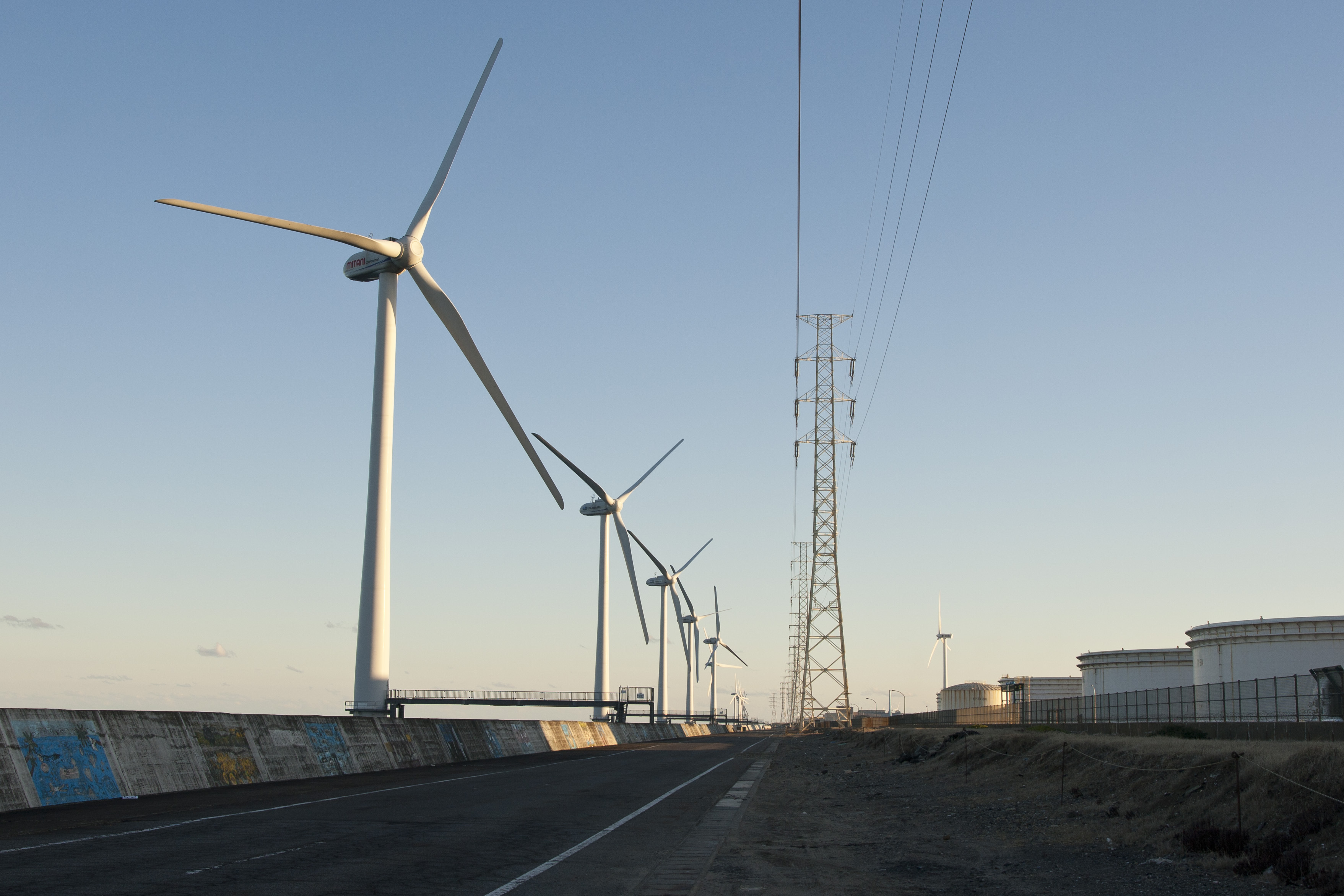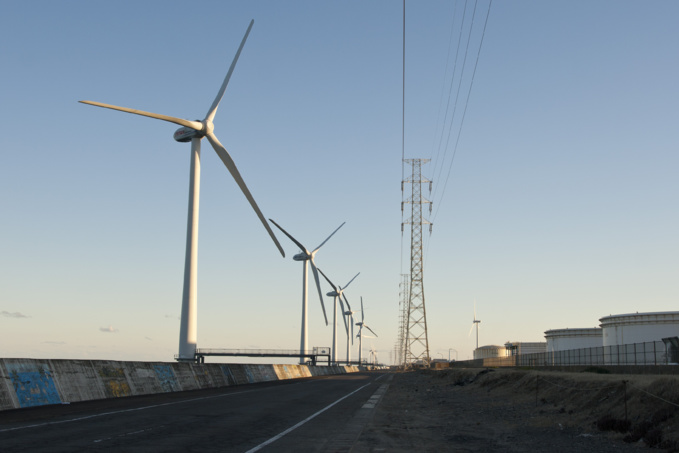There is a month until the current financial year ends, and the new capacity of wind power plants installed by Japan in 2016-2017 has every chance to almost double figures of the previous year. It will happen thanks to increased tariffs guaranteed by Tokyo and growing number of offshore wind farms. By March, Japan intends to add 300 MW of wind power - this is enough to supply more than 100,000 average homes, according to the Japan Wind Energy Association’s study.
Energy workers installed wind turbines with a total capacity of approximately 157 MW in the previous year. It was not possible to estimate how much money was invested in the new turbines, but the figures are still impressive enough to highlight fast pace of development of wind power in Japan after the Fukushima disaster.
According to the government’s development plan, capacity of Japanese wind power systems should reach 35 GW by 2030, which is more than 10 times higher than the current level, Reuters notes.
The country’s electrical energy industry depended on nuclear power by 30% before a strong earthquake and tsunami destroyed Fukushima-1 nuclear power plant. This led to shutdown of nuclear reactors throughout Japan.
"Capacity of projects for which environmental assessments were launched at the end of last year, exceeded 10 GW. If everything goes according to the plan, it is quite possible to reach a capacity of 10 GW in the early 2020s", the association’s study says.
This capacity will be almost threefold higher than 3.4 GW, which, according to the association, will be received in Japan in late March. Despite the fact that 3.4 GW is only 1.5% of the total capacity throughout the country (more than 90% of renewable energy in Japan is provided by solar energy), growth of this sector will continue.
According to the association's calculations, the wind power capacity will increase by more than 10 times by 2030, to 36.2 GW, depending on environmental estimates and permissible network capacity. Such a surge in popularity of wind power was triggered by an event occurred in May 2016. Then, the government relaxed rules for construction of turbines on the high seas, in bays and seaports of the country.
Wind energy operators still enjoy rather high prices for the supplied capacity. It is possible thanks to a tariff scheme introduced in 2012, when some suppliers of renewable energy received guaranteed rates based on the input capacity.
However, from October 1, 2017 the Ministry of Economy, Trade and Industry of Tokyo (METI) will reduce preferential tariffs for large wind energy projects from 22 yen to 21 yen per 1 kWh, taking into account the cost reduction over time.
Rate for offshore wind power projects will be maintained at 36 yen per 1 kWh.
Wind energy operators in Japan have long complained about compulsory studies on environmental impact, in traduced in the country. They regard this obligation as an obstacle to investment. To accelerate development of renewable energy, the Ministry of Economy and the Ministry of the Environment joined forces to halve time required to assess state of the environment for wind and geothermal projects.
Renewable energy in Japan blossomed after an accident at nuclear power plant "Fukushima" in 2011. On January 30, Tokyo Electric Power company reported that experts allegedly found radioactive waste under second reactor of troubled nuclear power plant "Fukushima-1". In October, experts found a leak of water with a high content of radioactive substances.
At the end of last year, Nikkei newspaper reported that cost of eliminating the accident’s consequences and paying compensation could be doubled, reaching a mark of 20 trillion yen (almost $ 180 billion) against planned 11 trillion yen earlier.
Renewable energy sources are becoming more popular throughout the world. As reported by the International Energy Agency (IEA), in 2015 new installed capacities of such sources exceeded fossil energy resources for the first time in history, amounting to about 153 GW (the greatest contribution - 63 GW - was made by wind power plants). At the same time, some countries, in particular South Africa, plan to abandon construction of new nuclear power plants because of economic problems. On the contrary, President of the United States Donald Trump wants to return the country to coal and natural gas.
source: reuters.com, asia.nikkei.com
Energy workers installed wind turbines with a total capacity of approximately 157 MW in the previous year. It was not possible to estimate how much money was invested in the new turbines, but the figures are still impressive enough to highlight fast pace of development of wind power in Japan after the Fukushima disaster.
According to the government’s development plan, capacity of Japanese wind power systems should reach 35 GW by 2030, which is more than 10 times higher than the current level, Reuters notes.
The country’s electrical energy industry depended on nuclear power by 30% before a strong earthquake and tsunami destroyed Fukushima-1 nuclear power plant. This led to shutdown of nuclear reactors throughout Japan.
"Capacity of projects for which environmental assessments were launched at the end of last year, exceeded 10 GW. If everything goes according to the plan, it is quite possible to reach a capacity of 10 GW in the early 2020s", the association’s study says.
This capacity will be almost threefold higher than 3.4 GW, which, according to the association, will be received in Japan in late March. Despite the fact that 3.4 GW is only 1.5% of the total capacity throughout the country (more than 90% of renewable energy in Japan is provided by solar energy), growth of this sector will continue.
According to the association's calculations, the wind power capacity will increase by more than 10 times by 2030, to 36.2 GW, depending on environmental estimates and permissible network capacity. Such a surge in popularity of wind power was triggered by an event occurred in May 2016. Then, the government relaxed rules for construction of turbines on the high seas, in bays and seaports of the country.
Wind energy operators still enjoy rather high prices for the supplied capacity. It is possible thanks to a tariff scheme introduced in 2012, when some suppliers of renewable energy received guaranteed rates based on the input capacity.
However, from October 1, 2017 the Ministry of Economy, Trade and Industry of Tokyo (METI) will reduce preferential tariffs for large wind energy projects from 22 yen to 21 yen per 1 kWh, taking into account the cost reduction over time.
Rate for offshore wind power projects will be maintained at 36 yen per 1 kWh.
Wind energy operators in Japan have long complained about compulsory studies on environmental impact, in traduced in the country. They regard this obligation as an obstacle to investment. To accelerate development of renewable energy, the Ministry of Economy and the Ministry of the Environment joined forces to halve time required to assess state of the environment for wind and geothermal projects.
Renewable energy in Japan blossomed after an accident at nuclear power plant "Fukushima" in 2011. On January 30, Tokyo Electric Power company reported that experts allegedly found radioactive waste under second reactor of troubled nuclear power plant "Fukushima-1". In October, experts found a leak of water with a high content of radioactive substances.
At the end of last year, Nikkei newspaper reported that cost of eliminating the accident’s consequences and paying compensation could be doubled, reaching a mark of 20 trillion yen (almost $ 180 billion) against planned 11 trillion yen earlier.
Renewable energy sources are becoming more popular throughout the world. As reported by the International Energy Agency (IEA), in 2015 new installed capacities of such sources exceeded fossil energy resources for the first time in history, amounting to about 153 GW (the greatest contribution - 63 GW - was made by wind power plants). At the same time, some countries, in particular South Africa, plan to abandon construction of new nuclear power plants because of economic problems. On the contrary, President of the United States Donald Trump wants to return the country to coal and natural gas.
source: reuters.com, asia.nikkei.com



















